In the spring of 1944, the war in Europe was nearing a turning point. Axis and Allies alike were waiting for the long-anticipated Allied invasion of the continent, and both sides were preparing. In spite of the monumental responsibilities required of the Supreme Allied Commander in the weeks before the invasion, General Dwight Eisenhower was thinking ahead to the days, weeks, and months that would follow. Eisenhower knew that those same GIs who needed the connection to home and boost of morale brought about by the music made available to them through the American Forces Network (AFN) would need to keep that connection once they crossed the English Channel.
In May 1944, Eisenhower put out an order to create an additional radio program to follow Allied troops into continental Europe. Personnel from the AFN, SHAEF (Supreme Headquarters Allied Expeditionary Force) staff, and the British Broadcasting Corporation (BBC) had to work together, overcoming the usual rivalries and competition over who was really in control over the programming and whether the Americans and British should continue their own separate broadcasts. Eisenhower insisted that the programming be a mix of British, American, and Canadian programming, flowing seamlessly together in order to further unify Allied troops who would be fighting in Europe and helping to dissuade any rivalries between the nations. After some firm threats to cut out the BBC and turn the entire program over to SHAEF, an agreement was reached and the program was quickly put together. The Allied Expeditionary Forces Programme (AEFP) first hit the airwaves at 5:55 a.m, (Double British Summer Time) on June 7, 1944.
As part of his plan for AEFP, Eisenhower sent a letter to General Henry “Hap” Arnold, the Commanding General of the US Army Air Forces (USAAF), requesting Captain Glenn Miller, his Army Air Forces Band, and his radio production unit be transferred to the United Kingdom. Eisenhower wanted Miller’s band to be the American Band of the Allied Expeditionary Forces (ABAEF) and a feature of the upcoming AEFP. Miller didn’t hesitate. He had been appealing to take his band to England. The opportunity was exactly what he wanted.
Miller flew to England while his 60 plus member organization took the slow route on board the RMS Queen Elizabeth, finally arriving in London in late June 1944. The timing was nearly disastrous. On June 13, German forces began to launch the first of their “retribution” weapons (Vergeltungswaffen), the V-1 flying bomb. Nicknamed doodlebugs, the V-1 was one-ton bomb built into a winged craft powered by a pulse jet engine. V-1s rained down on an already Blitz destroyed London for months in 1944. Miller quickly tired of the threat and moved his band 50 miles north to Bedford on July 2. The next day, a V-1 landed in the street in front of the quarters the band had vacated and destroyed the building, killing over 60 American servicemen. But Miller’s band was safe, and they were about to get very busy.
Out of harm’s way, Miller’s newly designated American Band of the AEF (the band was often still referred to as the Major Glenn Miller Army Air Force Band) started on a grueling schedule. The full 50 member band traveled to London weekly to record broadcasts for the AEFP and BBC. In addition, smaller dance and jazz bands within the larger orchestra recorded additional programs in Bedford. These programs brought the band to the attention of the British public, who quickly became avid listeners and huge fans.
On top of their heavy recording schedule, the band toured England, performing at Army Air Forces air bases around the country where they were met with wild cheering and great enthusiasm. Lieutenant General Jimmy Doolittle, Commanding Officer, Eighth Air Force, said of the band, “Next to a letter from home, Capt. Miller, your organization is the greatest morale booster in the ETO.” With the band’s continuing success, Miller was promoted to Major, receiving official word of the promotion in August 1944.
The late summer and early fall of 1944 was a busy time of collaboration for the ABAEF. Artists such as Bing Crosby and Dinah Shore had arrived in England and began to record with the band. Shore and the band even recorded at the HMV Abbey Road Studios, not yet made famous. Celebrities like Bing were also in England to record a propaganda program, run by an overseas branch of the Office of War Information, the American Broadcast Station in Europe. The program, called “The Wehrmacht Hour,” was hosted in German by Ilse Weinberger. Guests such as Miller would attempt to participate in a German language exchange with Isle during the show. Miller’s premier vocalist, Johnny Desmond even sang some of the band’s popular songs in German. The program was a hit in Germany, listened to by both military personnel and civilians.
Paris fell to the Allies in August, and Miller was eager to get to the continent where he could play for GIs on leave in the city. But the AEFP and BBC didn’t want to let him go. They relied heavily upon constant recordings from his band to fill their programming, and the logistics of recording in Paris and returning the recordings to London were complicated. To gain their approval, Miller agreed to a brutal recording schedule. From November 20 to December 12, the ABAEF recorded an astounding 84 hours of programming. He was cleared to go, and the announcement was made—Glenn Miller was headed to Paris.
With a Christmas Day performance scheduled, Miller was eager to get to Paris. There had been difficulty coordinating lodgings and other spaces required for his more than 60 member organization, and he was ordered to Paris himself to finish the work. Again, Miller faced difficulty. The weather was terrible—cold and foggy. Regular transportation flights were canceled, and Miller was getting antsy. The band was scheduled to fly to Paris on December 16, and Miller had to arrive before to firm up their plans.
Celebrities, like Miller, were required to have all air transportation formally approved, but Miller was too focused on the task at hand to worry about military bureaucracy. When he ran into his friend Lieutenant Colonel Norman Baessell, who offered Miller a seat on a flight to Paris on December 15, he didn’t hesitate to accept. Inclement weather continued on the 15th, but when a UC-64A Norseman landed at Twinwood Farm Airfield just before 2 p.m., Miller and Baessell boarded the plane. Piloted by Flight Officer John R. Stuart Morgan, the transport plane had to be flown below the cloud cover, anywhere from 1,500 to 3,000 feet. It was not an ideal day for a flight, and Miller and Baessell were not officially recorded on any manifests.
On December 18, the band finally arrived in Paris. Landing at the Orly airport, the band was quickly confused and concerned when Miller was not there to meet them. SHAEF was contacted to locate him, but they were unaware he had flown to Paris. Investigation led to a Missing Air Crew Report, filed on the 18. It was for a missing Norseman, flown by Flight Officer Morgan. Since Baessell and Miller had taken the flight without clearing any of the proper channels, they were not listed on the report. Miller’s administrative officer, Lieutenant Don Haynes, had driven the pair to the airfield and realized the horrific truth: Miller and Baessell were missing.
-

The top page from the Missing Air Crew Report, amended to add Miller and Baessell as passengers. Missing Air Crew Report No. 44-70285, the National Archives via Fold3.
-

The bottom page from the Missing Air Crew Report, amended to add Miller and Baessell as passengers. Missing Air Crew Report No. 44-70285, the National Archives via Fold3.
-

A copy of the Casualty Message Telegram delivered to Miller’s wife, Helen, just before Christmas 1944. From Miller’s Official Military Personnel File, National Archives, St. Louis, Missouri.
Over the decades, many theories came about as to what happened to Major Glenn Miller, from the likely-mechanical failure, to the outrageous—that Miller had died in a brothel in Paris and the flight was a cover-up. In the 1980s a former Royal Air Force member claimed that he saw a jettisoned bomb from a returning bombing run hit a Norseman over the Channel and destroy it. That theory, like the rest, was eventually debunked. The most realistic cause for the aircraft’s disappearance is mechanical failure. The Norseman had a carburetor that was known to freeze over, and in the cold December weather, that was a dangerous reality. Even if the plane had landed in the Channel, the passengers would have had little chance of survival in the frigid water.
The band was scheduled to perform on Christmas Day, but no official word had gone out about Miller’s disappearance. Pre-recorded programs were still being played, and outside of the band and SHAEF, few knew he was gone. On Christmas Eve 1944, the world learned that Major Glenn Miller was missing in action. The band’s mission was too important to stop, even with the loss of their beloved leader. And so they played on.
-

The Army Air Forces Band, directed by Ray MacKinley after Miller’s disappearance, plays for GIs on leave in Nice, France, May 1945. US Air Force photograph.
-

The Army Air Forces Band plays in Nuremberg, Germany after the war. US Air Force photograph.
By the time the Army Air Forces Band returned to the United States in August 1945, they had made over 300 personal appearances and played for more than 1,250,000 military personnel in Europe. Millions on both sides of the fight had had their spirits lifted by the music of Glenn Miller. The orchestra was disbanded in November 1945. The war was over, the men free to return to civilian life. Swing was on its way out, but the music of Major Glenn Miller and the Army Air Forces Band still delights audiences and listeners today, 75 years after his disappearance.

Major Glenn Miller, US Army Air Forces
The Glenn Miller Orchestra was at the top of the charts when Miller gave it all up to support the war effort. The first of two part series that will highlight Miller’s career and untimely disappearance.
Kali Martin
Kali Martin is a former Research Historian of The National WWII Museum's Jenny Craig Institute for the Study of War and Democracy.
Cite this article:
MLA Citation:
APA Citation:
Chicago Style Citation:
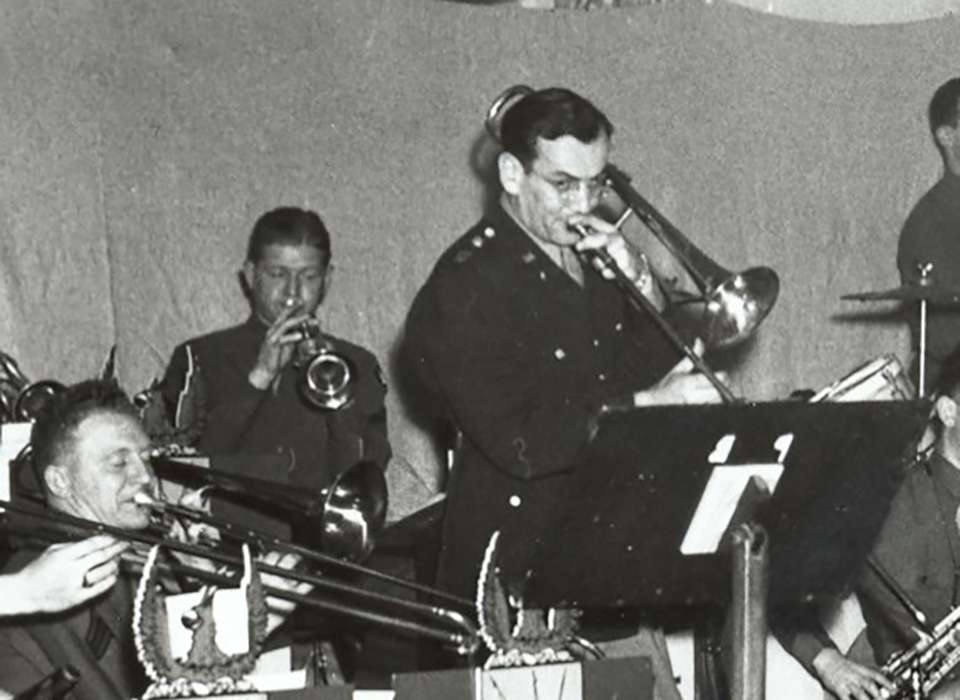
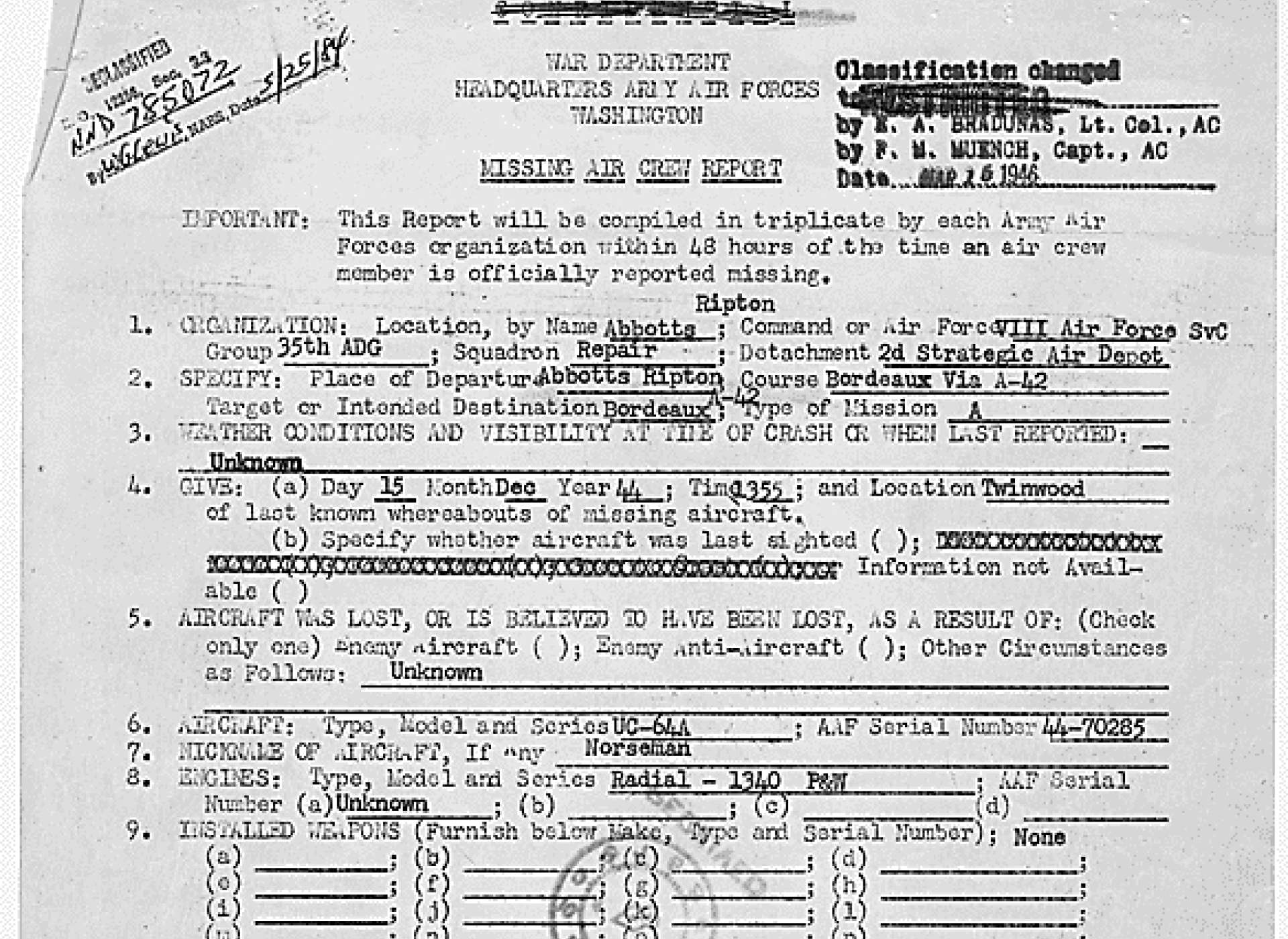
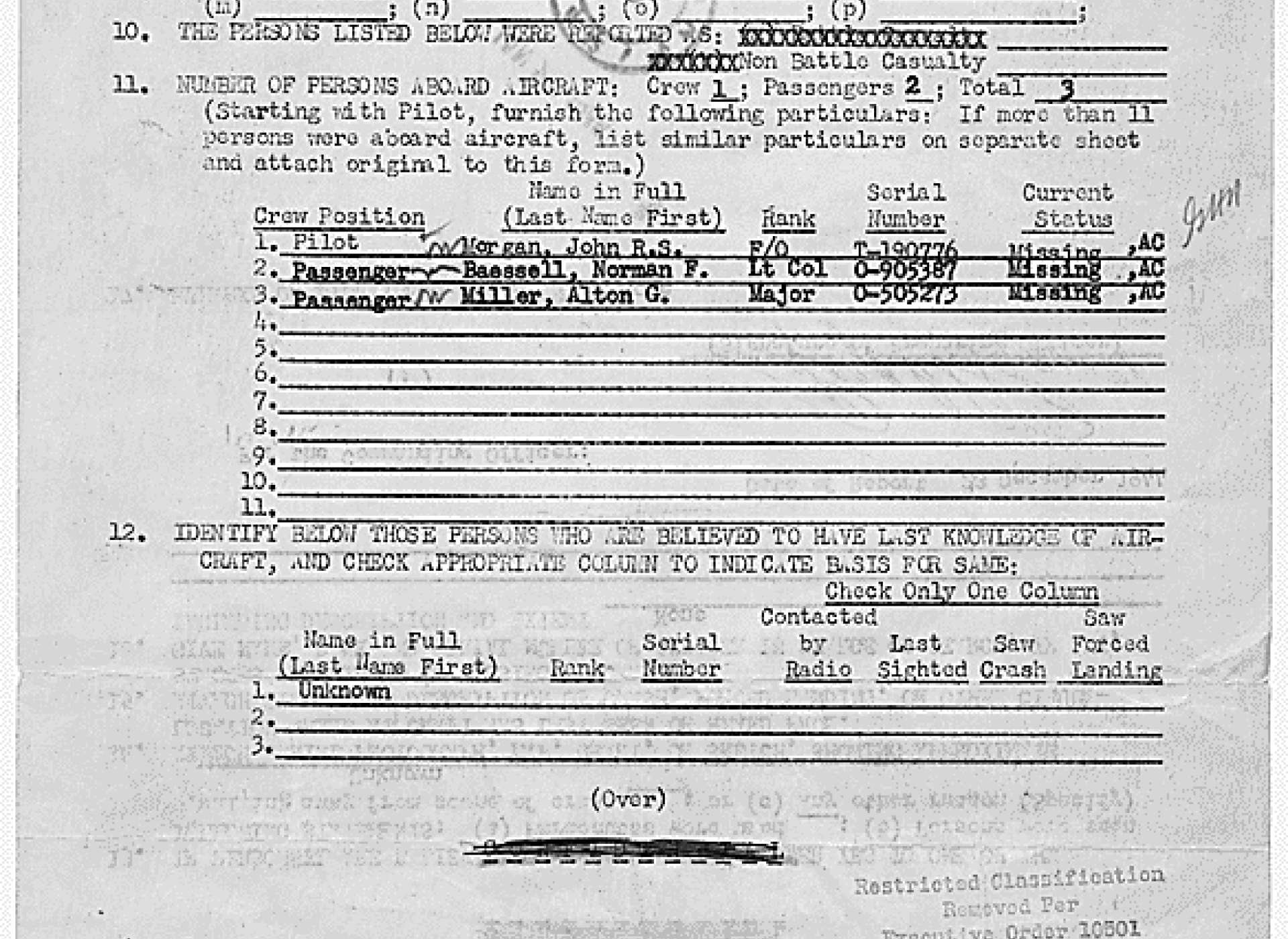
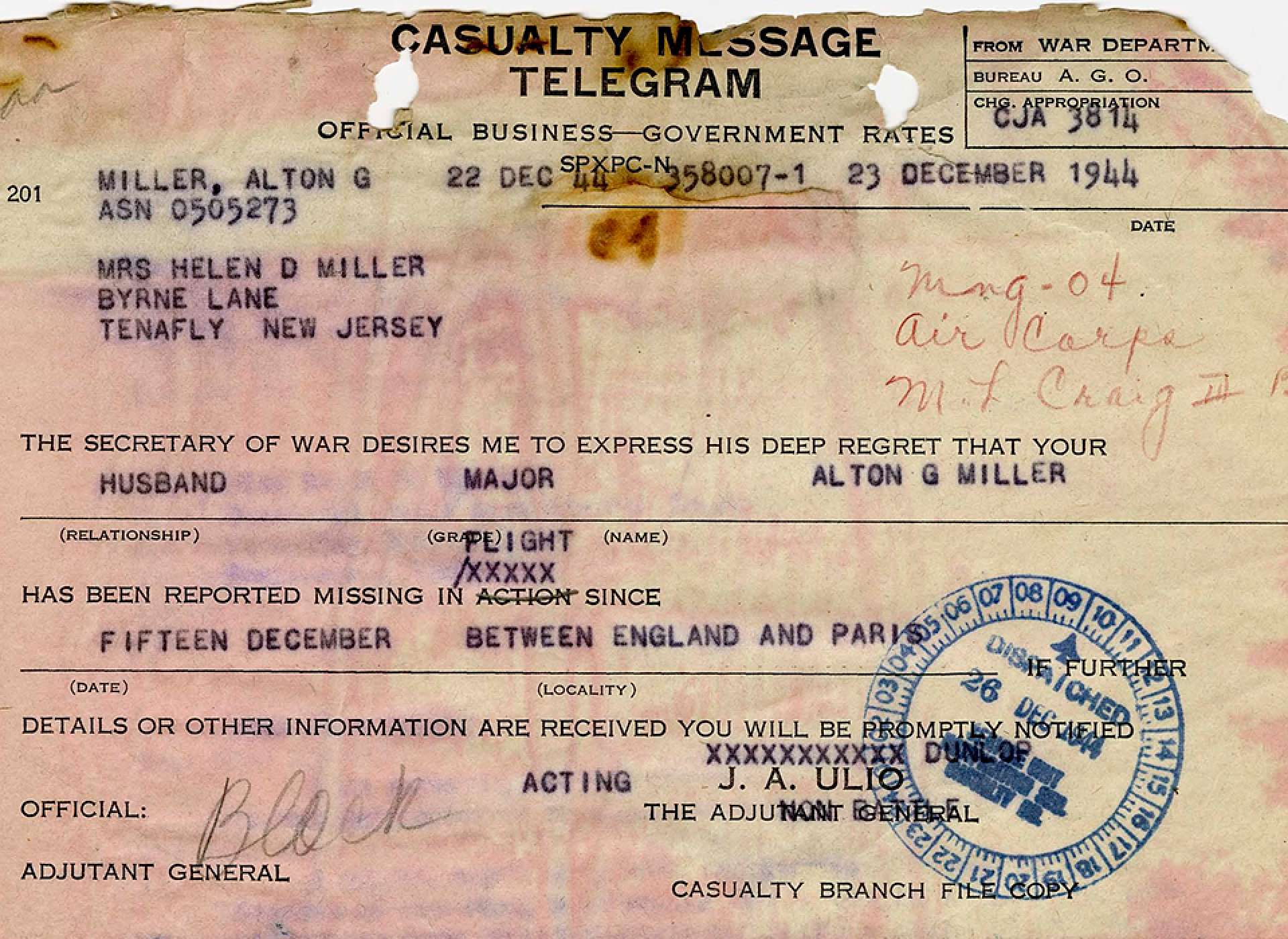
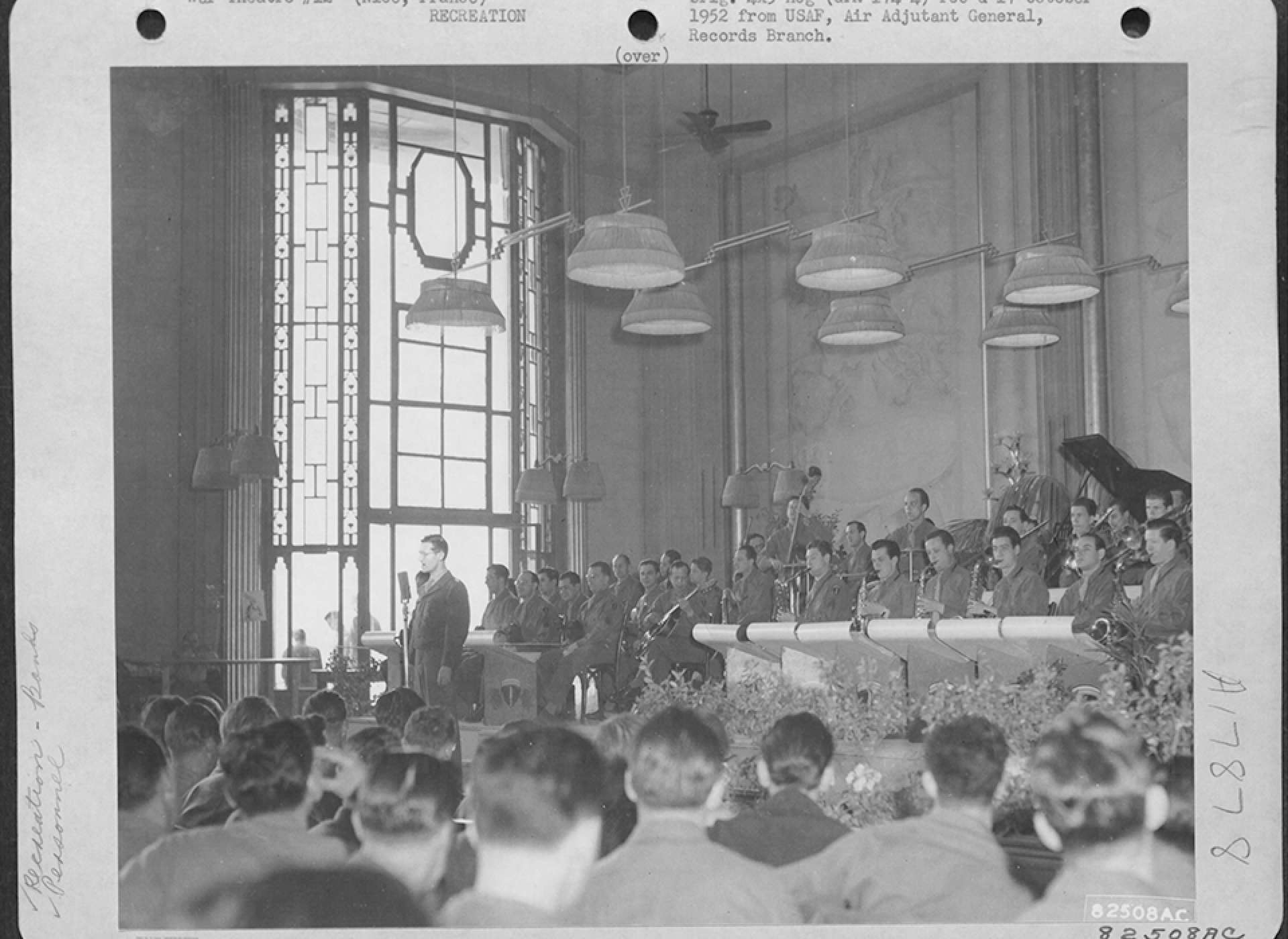
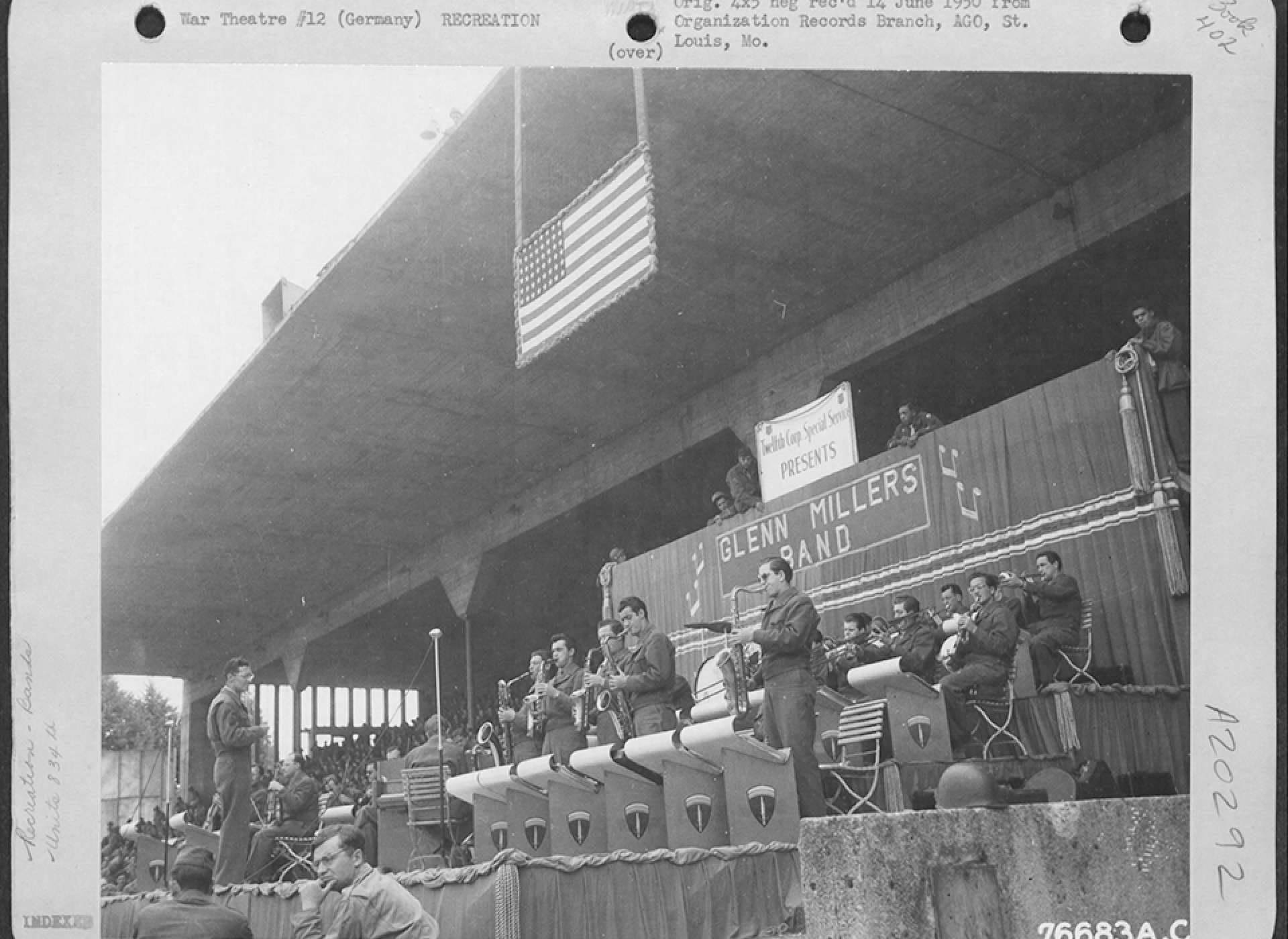




![Max Fuchs, New York City cantor, sings as Rabbi Sydney [sic] Lefkowitz, Richmond, VA, conducts the first Jewish services from Germany.](/sites/default/files/styles/max_650x650/public/2025-10/image1.jpg)



